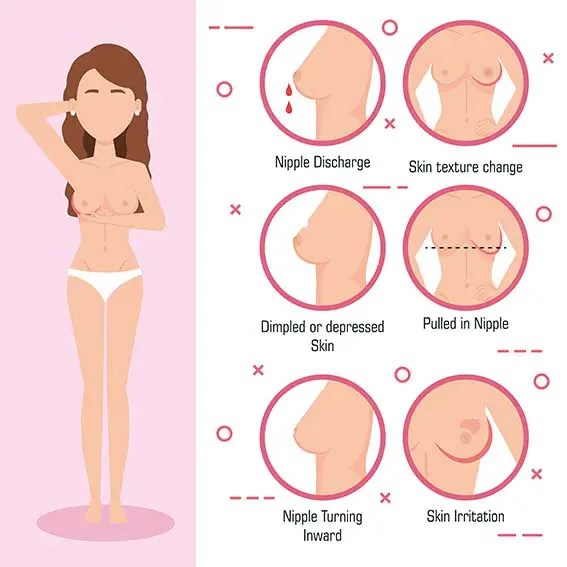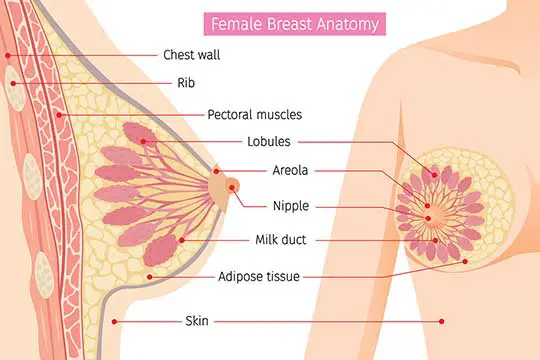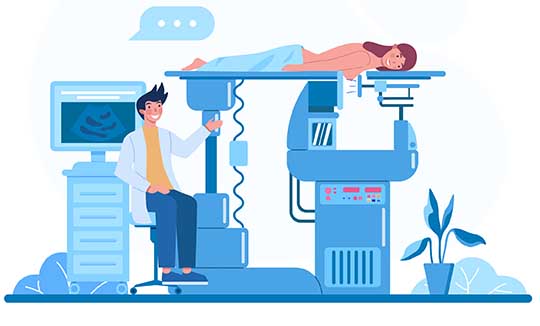Table of Contents
Areola Reduction Surgery Overview
Areola reduction surgery is a surgical procedure used to reduce the diameter or size of the areola. It can be done with breast lift, breast augmentation, breast reduction surgery, or alone.
The areola is the darkest (pigmented) area surrounding the nipple in the breast. The areola can be large, wide, and in various colors. If you want to reduce the size of the areola for a better appearance, you can choose the areola reduction surgery.
Genetic factors and hormones cause the size, shape, color of the areola. The areola cannot be changed by exercise or a balanced diet.
Let’s dive deep into the areola reduction procedure.
Best Candidate For Areola Reduction Surgery
Areola reduction is not only for women but also for men. In addition, areola reduction can be performed with gynecomastia surgery.
Suppose you are unsatisfied with your areola shape or condition. Then, you can undergo this procedure. Women with the following areola conditions can be the ideal candidates.
- If you recently lost weight and your areolas become stretched and asymmetrical.
- If your nipples and areolas changed after pregnancy and breastfeeding.
- If you have puffy areolas, this procedure can reduce the areola and match with the other one.
- If you have asymmetrical areolas.
- If you are not happy with the size of your areolas.
In women, the areola reduction surgery must be performed after 20 years of age. This is because, before 20, the breasts are still growing.
In the case of men, the areola reduction surgery can be performed during adolescence. But it’s safe and better to undergo this procedure after 19 years of age.
Read B Cup Breasts
Different Shapes of Areolas
Puffy Areolas
The puffy areola is a genetic condition where the breast tissue pushes forward the nipples and the areolas. This condition is common with tuberous breasts.
In this condition, the breast narrows forward and creates an elongated breast crease with a tubular appearance. The nipples face outward with unusually conical projection.
This condition can be treated with a breast lift and breast reduction, and areola reduction surgery should be done with these procedures.
As the puffy areola is a genetic condition, sometimes it is seen in the whole family.
Asymmetrical Areolas
When the sizes of the two areolas are different, they are called asymmetrical. In that case, the surgeon will reduce the size of the larger areola to match with the other one.
Non-Circular Areolas
Usually, the areolas are circular. However, some genetic factors may cause non-circular areolas. In that case, areola reduction surgery is needed to make the areolas circular.
Consultation
During the areola reduction consultation, be prepared to discuss;
- Why do you want areola reduction surgery, your expectations
- Medical history, drug history, allergic history
- Current medication, drugs, supplements, food habits, etc.
- Smoking history
- Family history of breast cancers.

The surgeon will perform a physical examination, which may include;
- Examine your health status, pre-existing medical conditions, and complication factors
- Examine your breast’s size, shape, position, and measuring the nipples, areolas in detail.
- Your surgeon may ask you to photograph your breasts, which won’t include your face.
- The doctor will discuss the procedure and also mention if there are other options.
- The doctor will discuss the results and possible side effects.

It’s natural to be nervous while talking about the surgery but make sure you note what the doctor told you. The doctor will ask you about your expectations, make sure you are expressing the right one.
Make sure you know the possible side effects and complications. Don’t be shy to discuss your breast, nipple, or areola condition.
The better you express your feelings and expectations, the better result you may get.
Questions to Ask The Surgeon About Areola Reduction Surgery
- Are the surgeon a certified plastic surgeon
- How many years of training does he have
- How many years of experience does he have
- Where will the surgery going to be performed? Is it in a hospital or surgeon’s office?
- Are you a good candidate?
- Can you get your expected results?
- What will be the procedure of the surgery in brief?
- What are the possible side effects?
- What risk factors do you have?
- Would the incisions mark be visible after the procedure?
- How long would be the recovery period?
- After how many days can you see the best results?
- What if the complications arise?
- Do you have to stay in hospital after the procedure?
- The total cost of the procedure
- Can you breastfeed after the procedure?
- Can you do this during pregnancy?
- What if the result does not meet your expectations?
- Are there any before and after photos of the candidates done by him?
If you have any confusion or other question in mind, feel free to ask them.

Preparation For Areola Reduction Surgery
During the consultation after the examination, the doctor may recommend you some tests to do. After getting the tests done, the doctor will finally determine if you are an ideal candidate.
If the surgeon thinks that it’s safe to perform an areola reduction surgery on you he may give you some instructions to follow. These may include;
- Taking some medications and avoiding some medications
- Stop smoking six weeks before the surgery
- Stop drinking six weeks before the surgery
- Avoid taking aspirin and particular anti-inflammatory drug
- Fasting the day of surgery
- Using specific surgery soap on the day of surgery
- Avoiding makeup jewelry and heavy dresses on the day of surgery
Make sure you have someone who can drive you back from the hospital after the procedure. It’s recommended not to drive after the procedure at least for three days.
The Areola Reduction Surgery Procedure
The areola reduction is a simple procedure and can be done within an hour. This procedure can be done both in the hospital and the doctor’s office with surgical facilities.

Before The Procedure
The steps before the procedure may include;
- The nurse will give you a gown to wear. Remove your bra and wear the gown.
- You’ll be asked to remove jewelry if you wear any.
- The nurse would check your blood pressure.
- You may be given medicine to stay relaxed.
- An intravenous catheter will be inserted, and the ECG electrodes will be applied to your chest for monitoring the heartbeats during the surgery.
- You will be given local or general anesthesia according to your health status.
During The Procedure
- The surgeon will cut a certain piece of tissue from your areola
- A circular incision will be made to give the areola a right shape
- A suture inside your breasts will secure the areola position.
- The surgeon will use dissolvable stitches to close the incisions.
As the areola is a deep pigmented area, the incision marks won’t be visible.
After The Procedure
- The doctor may recommend you a post-surgical bra or garment for better healing.
- The doctor may give you specific post-surgical medications.
- You can leave the hospital on the day of surgery if local anesthesia is applied. If general anesthesia is applied, then you may need to stay longer.
The Recovery
The recovery period is not long in an areola reduction surgery. You can go back to your home on the day of the procedure. You can join to your work after 2-3 days.
The doctor will provide you some instructions for the recovery period.
- Pain killer medications for few days
- Wear a soft bra or surgical bra for some days
- Avoid participating in sexual intercourse for a week
- Avoid physical chest contact for a month
- Avoid heavy physical activity and work out for a few weeks.
There can be some pain, redness, and swelling on your breast for one or two days. Taking pain medications will help to relieve that.
Ask the doctor if you can take a shower the next day after surgery. It’s better to avoid water on breasts for at least three days.
As you cannot be involved in a heavy workout for a month, it’s better to walk every morning to keep the fitness.
The Results
The result of the areola reduction surgery is permanent. You will notice instant results right after the surgery. But after a full recovery, you’ll get the best result.
Your areola will be in good shape and size. The areola will look smaller and centered. A circular scar may be visible around the areola during the first few days of surgery, but eventually, they fade away.
Very few people do not get their expected results. In that case, they can undergo another surgery to get their desired results.
Possible Side Effects and Complications
The areola reduction is a safe procedure. The side effects and complications are quite rare. The possible side effects of this procedure may include;
- You can temporarily lose the sensation in your areola. It is not permanent, and very low people experience this. It occurs during the recovery period, and the sense comes back after few days of the surgery.
- Sometimes the incision around the areola becomes visible. It occurs due to skin reactions and aging factors. After the procedure, the scars are almost invisible. But over the years, it can become more visible as you grow older.
- There can be infected if you don’t follow the post-surgical instructions during the recovery period. Make sure you follow the instructions properly.
- If the surgeon mistakenly cuts the milk duct from the nipples during the procedure, you cannot breastfeed your child in the future. This is very rare and only done by mistakes. However, this can be restored by another simple surgical procedure.
Some other complications include;
- Bleeding
- Change in sensation
- Anesthesia risks
- Hematoma
- Persistent pain
- Unusual sensation
- Wrinkling of the skin surrounding the areola
Emergency Situations
- Fever
- Bleeding
- Unusual pain
- Signs of infection
- Pus leaking
- Poor healing
If you face any of the situations mentioned above, call the doctor right away and visit the doctor’s office.
The Areola Reduction Surgery Cost
The average cost for an areola reduction surgery in the USA is $2000-$5000. It’s not a fixed value. It varies according to the locations and some other factors.
Other costs may include;
- Anesthesia fee
- Medications charge
- Surgical garments cost
Talk to your surgeon during the consultation about the final cost of the procedure.
As areola reduction surgery is a cosmetic procedure, it won’t be covered by the insurance. However, some hospitals may provide you EMI support and help you to get the procedure done.
Nipple Reduction
Nipple reduction is a procedure to reduce the size of the nipple and repositioning according to the patient expectation.
The nipple is a conical projection on the center of the breast. The nipples are surrounded by pigmented skin known as areola.
You may want a nipple reduction surgery if you have the following conditions;
Nipple Hypertrophy
Nipple hypertrophy is a condition characterized by enlarged nipples. This can be present with saggy breasts. This condition is treated by nipple reduction surgery. In an enlarged nipple, a specific portion of the nipple is removed to give it a perfect shape and size.
Inverted Nipples
An inverted nipple is a condition characterized by nipples retracted into the breast. It’s just the opposite of a normal nipple. It’s caused genetically, the milk ducts pull the nipples beneath the breasts.
To treat this condition, the surgeon makes an incision at the base of the nipples and cuts the fibers of the milk duct that are pulling the nipples.
Treating this condition does not affect your breastfeeding capacity.
Areola Reduction Surgery Summary
Areola Reduction Surgery is a cosmetic surgical procedure. If a person is not satisfied with the size and shape of the areolas, she can undergo this surgery to get the expected smaller sized and shaped areolas.
Although areola reduction is a safe procedure, there are some risks and complications that may arise.
Frequently Asked Questions (FAQs)
How much is areola reduction surgery?
It depends on the location, surgical facility, etc. The average cost for an areola reduction surgery is $2000-$5000.
Is areola reduction painful?
This procedure is under anesthesia, so you won’t feel anything. The recovery period of this surgery is not long. You may feel little pain for the first few days. Your surgeon will prescribe pain medication for you.
How long takes an areola reduction?
This is an easy procedure and is usually done within one hour.
Last Updated on February 23, 2022 by Learn From Doctor Team






